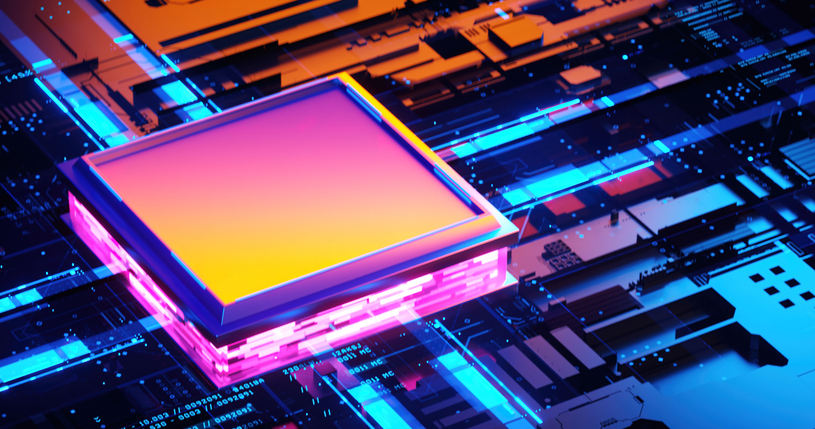Introduction to Quantum Computing
Quantum computing is a rapidly evolving field at the intersection of quantum mechanics, computer science and information theory. While traditional computers rely on classical bits—binary states of 0 or 1—to process and store information, quantum computers leverage the principles of quantum mechanics to perform computations in fundamentally different ways. By harnessing the properties of quantum systems, such as superposition, entanglement, and quantum interference, quantum computers promise to solve certain problems exponentially faster than classical machines.
In recent years, the potential of quantum computing has generated significant excitement, not only among scientists and engineers but also in industries ranging from cryptography and materials science to artificial intelligence and financial modelling. As quantum computing advances, it holds the potential to revolutionize technology, giving rise to new algorithms and applications that are beyond the capabilities of classical computing.
This introduction explores the core concepts of quantum computing, including the principles of quantum mechanics, the structure of a quantum computer, key algorithms and potential applications.
Quantum Mechanics: The Foundation of Quantum Computing
Quantum computing is based on the laws of quantum mechanics, the branch of physics that describes the behaviour of particles at the atomic and subatomic levels. Unlike classical mechanics, which governs the macroscopic world and follows deterministic rules, quantum mechanics introduces probabilistic and non-intuitive behaviours.
Here are the key principles of quantum mechanics that are relevant to quantum computing:
- Superposition: In classical computing, a bit exists in one of two states, either 0 or 1. Quantum bits, or qubits, however, can exist in a superposition of both states simultaneously. This means a qubit can represent both 0 and 1 at the same time. When measured, a qubit collapses into one of the two states with certain probabilities. The concept of superposition enables quantum computers to process a vast number of possibilities simultaneously.
- Entanglement: Entanglement is a phenomenon where two or more qubits become correlated in such a way that the state of one qubit is dependent on the state of the other, no matter how far apart they are. This entanglement allows for powerful quantum correlations and enables quantum computers to perform complex computations with interconnected qubits. Entangled qubits can also be used to transmit information instantaneously, which is one of the reasons quantum communication is so promising.
- Quantum Interference: Quantum systems can interfere with themselves due to the wave-like nature of particles. Quantum interference is used in quantum algorithms to enhance the probability of the correct solutions by amplifying the right answers and cancelling out incorrect ones. This property plays a crucial role in optimizing quantum computations.
- Quantum Measurement: Unlike classical bits, the state of a qubit is not deterministic until it is measured. When a qubit is measured, the superposition collapses to a definite state, either 0 or 1, and this final measurement affects the outcome of computations. Understanding how and when to measure qubits is an essential part of designing quantum algorithms.

Structure of a Quantum Computer
At its core, a quantum computer consists of three main components: qubits, quantum gates, and measurement mechanisms.
- Qubits: As mentioned earlier, qubits are the basic units of information in a quantum computer. Various physical systems can be used to implement qubits, such as trapped ions, superconducting circuits, or photons. These systems must be carefully isolated and controlled to preserve their quantum properties.
- Quantum Gates: Quantum gates are the building blocks of quantum circuits. They manipulate the state of qubits and enable quantum computations. Unlike classical logic gates, which only work on binary states, quantum gates operate on the complex state space of qubits in superposition. Common quantum gates include the Hadamard gate (which creates superposition), the CNOT gate (which entangles qubits) and the Pauli gates (which rotate qubit states).
- Quantum Circuits: A quantum algorithm is implemented by constructing a sequence of quantum gates, forming a quantum circuit. Quantum circuits are designed to manipulate the qubits through multiple stages of superposition, entanglement, and interference, ultimately leading to the desired result when the qubits are measured.
- Measurement: Once the quantum computation is complete, the qubits are measured, collapsing their superposition into classical outcomes of 0s and 1s. The result of the measurement provides the solution to the problem being solved.
Quantum Algorithms
One of the most compelling aspects of quantum computing is its ability to solve certain problems exponentially faster than classical computers, thanks to specialized quantum algorithms. Some of the most famous quantum algorithms include:
- Shor's Algorithm: Shor's algorithm is designed to factor large numbers into prime numbers exponentially faster than any known classical algorithm. This capability poses a threat to modern cryptography, which relies on the difficulty of factoring large numbers as the basis for security. Quantum computers running Shor’s algorithm could break widely used encryption schemes, such as RSA, making cryptographic systems vulnerable.
- Grover's Algorithm: Grover's algorithm offers a quadratic speedup for unstructured search problems. For example, if you are searching for a specific item in an unsorted database of N entries, a classical computer would require O(N) steps to find the item, whereas Grover's algorithm can accomplish the task in approximately O(√N) steps. While this is not an exponential improvement, it is still significant for large databases.
- Quantum Simulation: Quantum computers can simulate quantum systems more efficiently than classical computers, making them ideal for studying complex molecules, chemical reactions and materials. This ability could revolutionize fields such as drug discovery, materials science and quantum chemistry, where understanding quantum phenomena is crucial.
- Quantum Machine Learning: Quantum computers can also be used to accelerate machine learning tasks, such as optimizing models, pattern recognition and data analysis. Although quantum machine learning is still in its early stages, researchers are exploring how quantum algorithms can enhance the performance of traditional machine learning methods.

Challenges and Limitations
Despite the immense potential of quantum computing, several significant challenges remain:
- Qubit Stability and Error Correction: Qubits are highly sensitive to their environment, and even small disturbances can cause errors in computations. This phenomenon is known as "quantum decoherence." To build reliable quantum computers, researchers are working on error correction techniques, such as quantum error-correcting codes, to protect qubits from noise and decoherence (loss of information).
- Scalability: Current quantum computers are still relatively small, with only a limited number of qubits. To realize the full potential of quantum computing, it is essential to develop systems that can scale to thousands or millions of qubits. This requires advances in hardware design, qubit control and error mitigation strategies.
- Quantum Software: While significant progress has been made in designing quantum hardware, quantum software is still in its infancy. Quantum programming languages, compilers and algorithms are being developed to make quantum computing more accessible to researchers and developers.
- Practical Applications: Although quantum computers have shown theoretical advantages, practical, real-world applications are still limited. It may take several more years or even decades before quantum computers can outperform classical computers in tasks beyond specific use cases like cryptography or quantum simulations.
Applications of Quantum Computing
As quantum computing matures, its applications are expected to span a wide range of fields, including:
- Cryptography: Quantum computing threatens current encryption methods, but it also offers the potential for new, more secure cryptographic techniques, such as quantum key distribution (QKD), which ensures secure communication based on the principles of quantum mechanics.
- Drug Discovery and Materials Science: Quantum computers can simulate complex molecular interactions and chemical reactions, leading to breakthroughs in drug development, new materials and cleaner energy sources.
- Optimization: Many real-world problems, such as supply chain management, financial modelling and logistics, involve optimizing large datasets. Quantum computers can potentially solve these problems more efficiently than classical systems.
- Artificial Intelligence and Machine Learning: Quantum machine learning algorithms could significantly accelerate the training of AI models, improving tasks like image recognition, natural language processing and data classification.
Conclusion
Quantum computing represents a paradigm shift in how we approach computation, offering solutions to problems that are currently intractable for classical computers. While the field is still in its early stages, the rapid advancements in quantum hardware, algorithms, and applications suggest that quantum computing has the potential to revolutionize industries and transform technology. Overcoming the challenges of qubit stability, error correction and scalability will be crucial for unlocking the full power of quantum computing in the coming decades.

